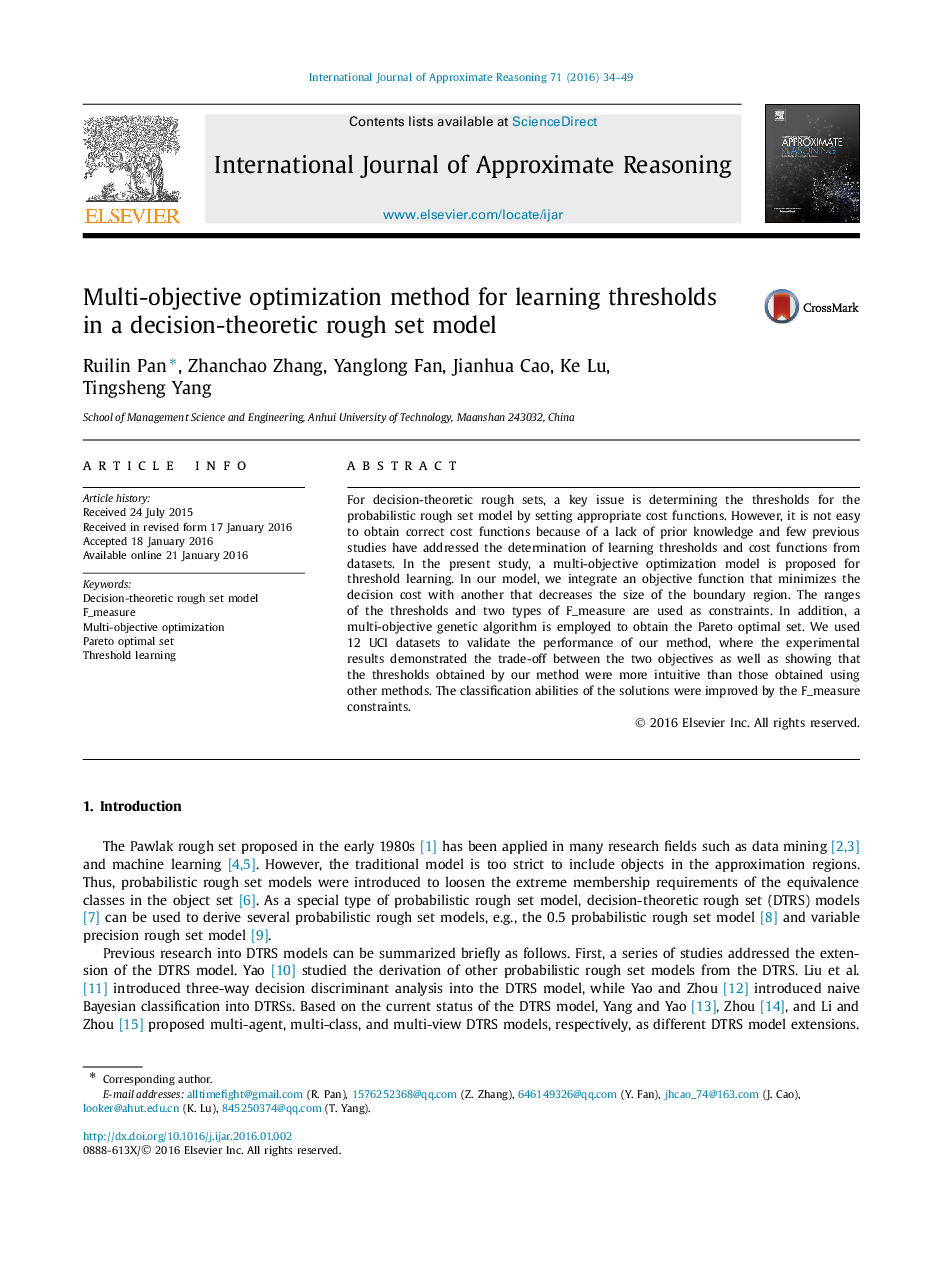| Article ID | Journal | Published Year | Pages | File Type |
|---|---|---|---|---|
| 397236 | International Journal of Approximate Reasoning | 2016 | 16 Pages |
•We propose a multi-objective optimization method for learning thresholds.•Decreasing the size of the boundary region is represented simply.•The penalties in single objective model could be neglected.•Solutions with better classification ability can be improve by F_measures.•Users may select the final solution based on their own preferences.
For decision-theoretic rough sets, a key issue is determining the thresholds for the probabilistic rough set model by setting appropriate cost functions. However, it is not easy to obtain correct cost functions because of a lack of prior knowledge and few previous studies have addressed the determination of learning thresholds and cost functions from datasets. In the present study, a multi-objective optimization model is proposed for threshold learning. In our model, we integrate an objective function that minimizes the decision cost with another that decreases the size of the boundary region. The ranges of the thresholds and two types of F_measure are used as constraints. In addition, a multi-objective genetic algorithm is employed to obtain the Pareto optimal set. We used 12 UCI datasets to validate the performance of our method, where the experimental results demonstrated the trade-off between the two objectives as well as showing that the thresholds obtained by our method were more intuitive than those obtained using other methods. The classification abilities of the solutions were improved by the F_measure constraints.
